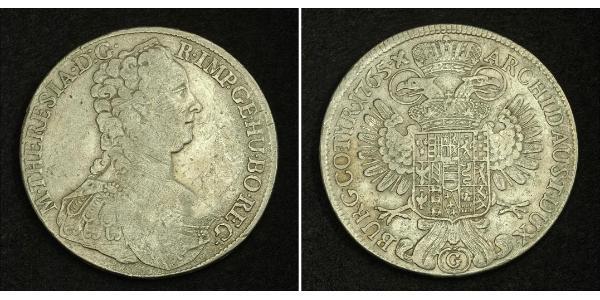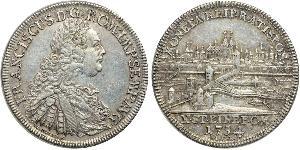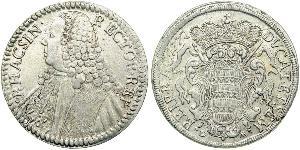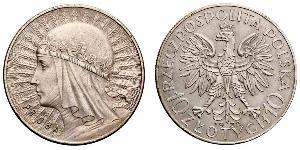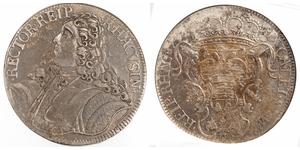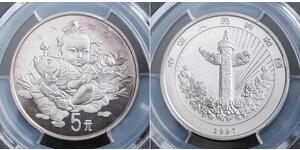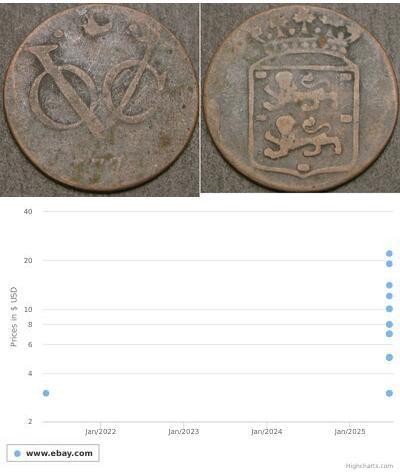(售价 $120.0)
1765, German States, Burgau (Austrian Posession), Maria Theresa. Silver Thaler. VF-
Mint Year: 1765
Denomination: Thaler
Reference: Davenport 1147, KM-15. R!
Mint Place: Gunzburg (Burgau, Germany)
Condition: Corrosion damage, scratches, cleaning, otherwise VF.
Diameter: 40mm
Material: Silver
Weight: 26gm
Obverse: Diademed bust of Maria Theresa right. No mint master´s initals initials below.
Legend: M . THERESIA . D : G . R . IMP . HU BO . REG .
Reverse: Crown above double headed imperial eagle, with a broad shield with coat-of-arms. Mint initial (G) below.
Legend: ARCHID . AUST . DUX . BURG . CO . TYR . 1765 . X
For your consideration a decent lifetime issue of the famous Maria Theresa Thaler, struck at the Gunzburg mint in Burgau (an Austrian posession nearl Ulm in Germany) during 1765. This example is one of the early and sought after issues with was struck during the year shown on the coin. Some of the differences to the 1780´s re-strikes are the eagle´s feathers, the style of Maria Theresa´s bust and the larger shield in reverse. A must for every Austrian- and German coins collector and apparently not a re-strike!
Bid with confiedence!
Maria Theresa (German: Maria Theresia, see also other languages; May 13, 1717 – November 29, 1780) was a reigning Archduchess of Austria, a Queen of Hungary and Bohemia, and a Holy Roman Empress.
Maria Theresa was the oldest daughter of Elisabeth Christine of Brunswick-Wolfenbüttel and Emperor Charles VI, who promulgated the Pragmatic Sanction to allow her to succeed to the Habsburg monarchy. Opposition to her acceding to the throne led to the War of the Austrian Succession in 1740. After Emperor Charles VII, who claimed the throne, died in 1745, Maria Theresa obtained the imperial crown for her husband, Francis I. Though she was technically empress consort, Maria Theresa was the de facto ruler of the nation, and she began styling herself Holy Roman Empress in 1745. Maria Theresa had in fact already begun her rule in 1740 during the Austrian War of Succession.
Maria Theresa helped initiate financial and educational reforms, promoted commerce and the development of agriculture, and reorganized the army, all of which strengthened Austria's resources. Continued conflict with the Kingdom of Prussia led to the Seven Years' War and later to the War of the Bavarian Succession. She became dowager empress after the death of Francis and ascession of her son Joseph as emperor in 1765. Maria Theresa criticized many of Joseph's actions but agreed to the First Partition of Poland (1772). A key figure in the power politics of 18th century Europe, Maria Theresa brought unity to the Habsburg Monarchy and was considered one of its most capable rulers. Her 16 children also included Marie Antoinette, queen consort of France, and Leopold II, Holy Roman Emperor.
40 coin descriptions were improved from 2025-05-21 to 2025-05-28
其中一个是:
5 Yuan 中华人民共和国 銀
本组有 2 钱币

